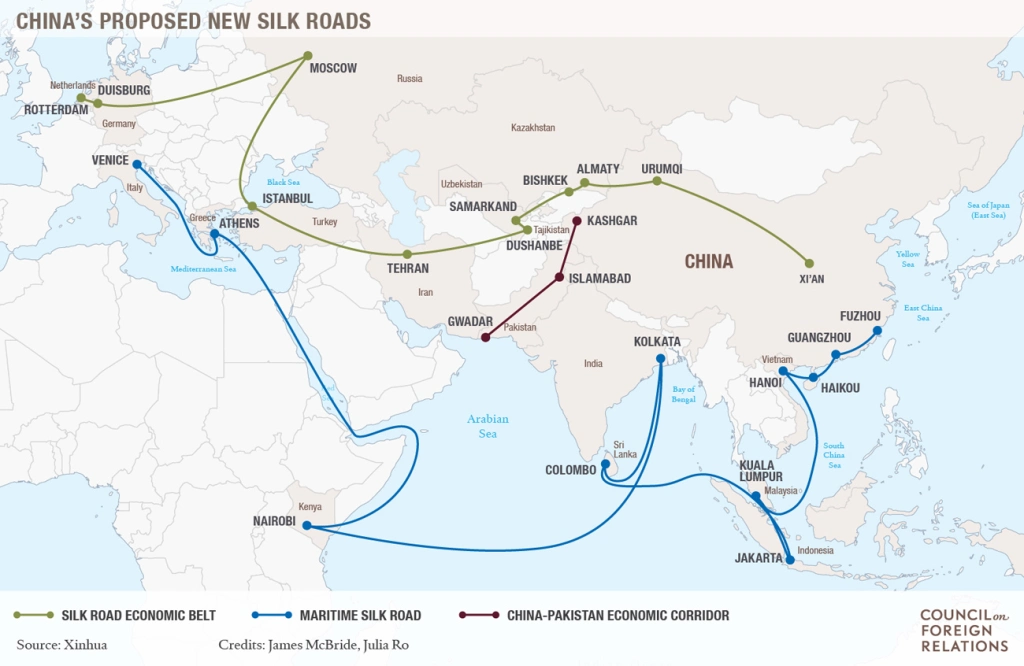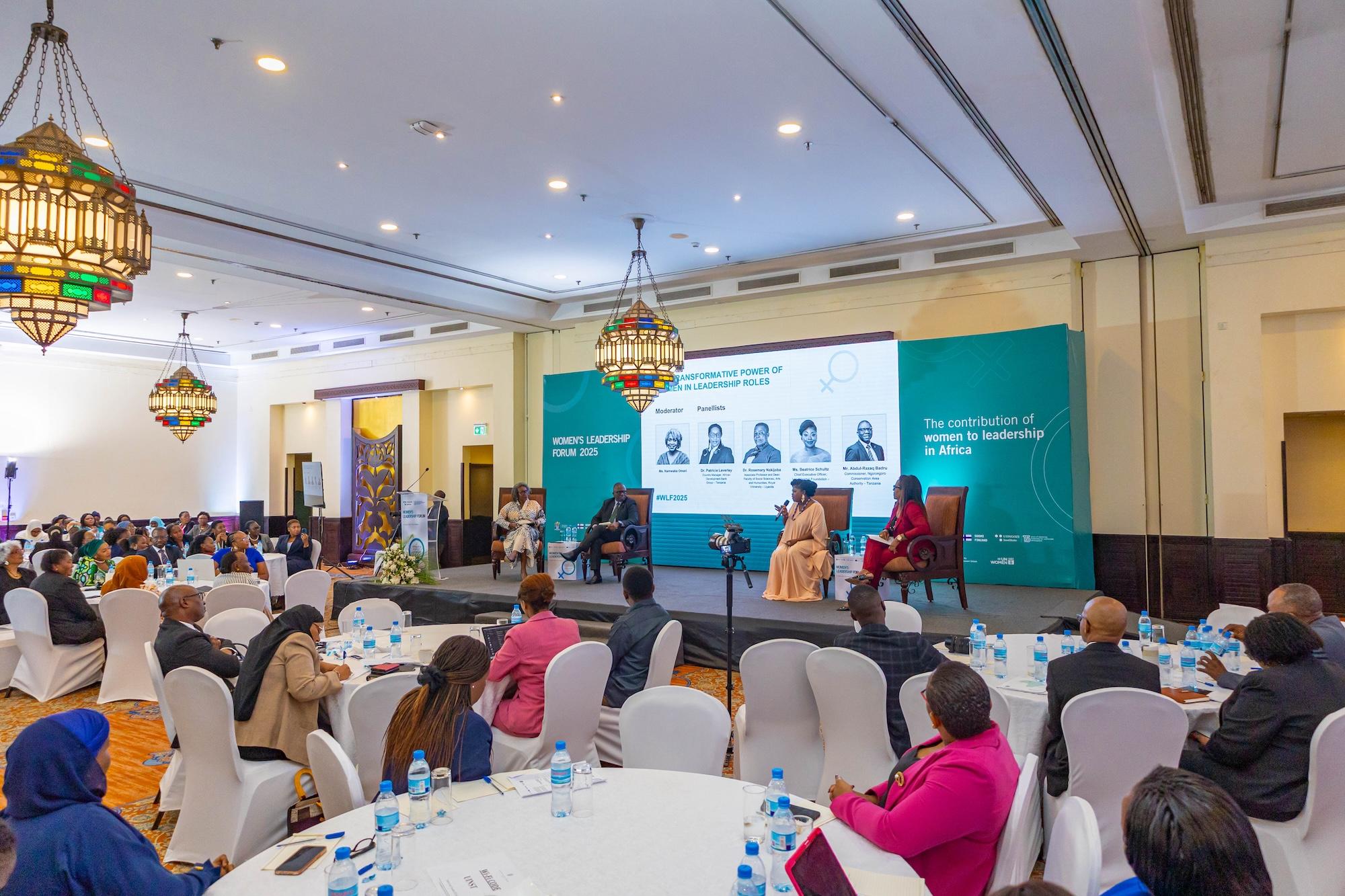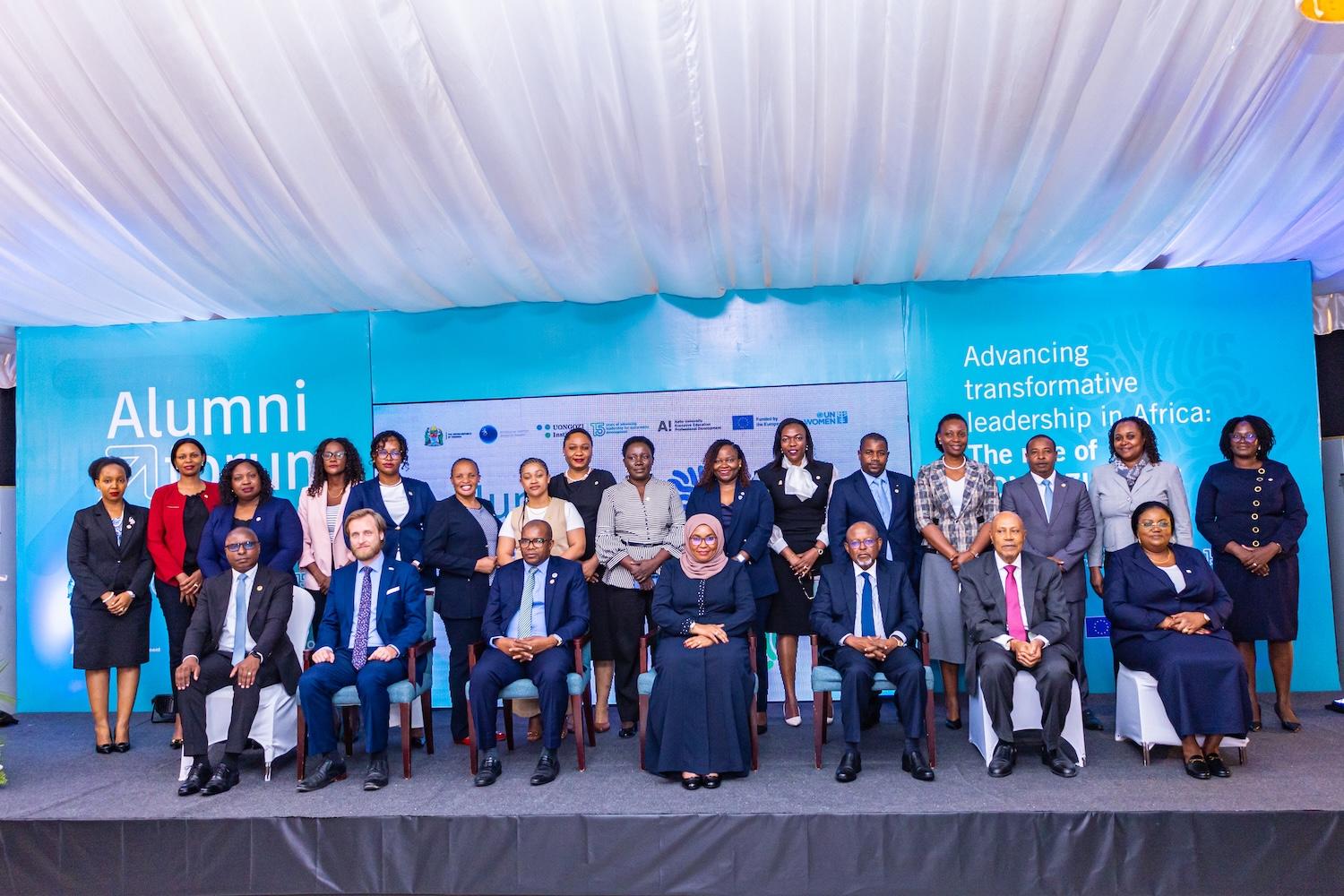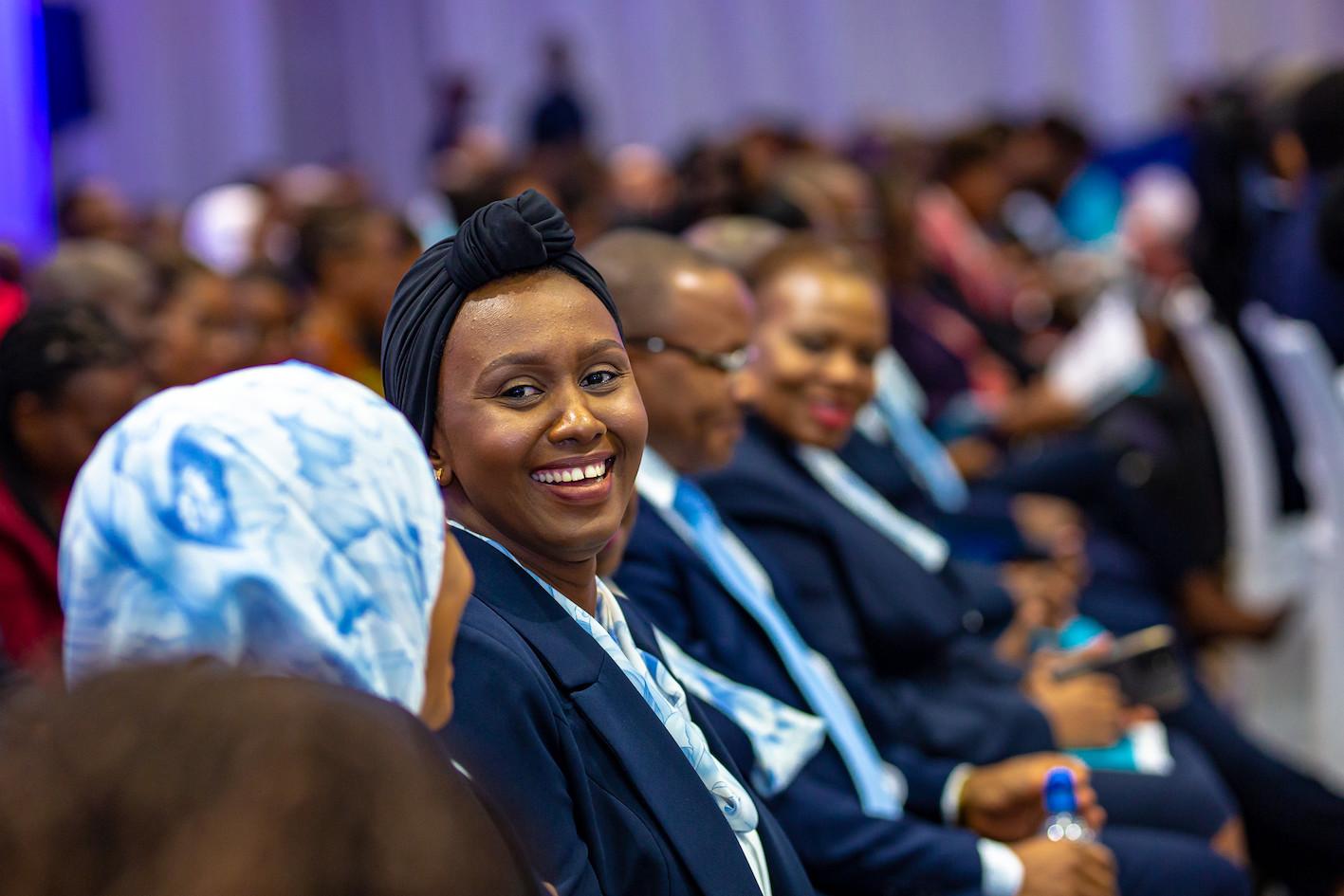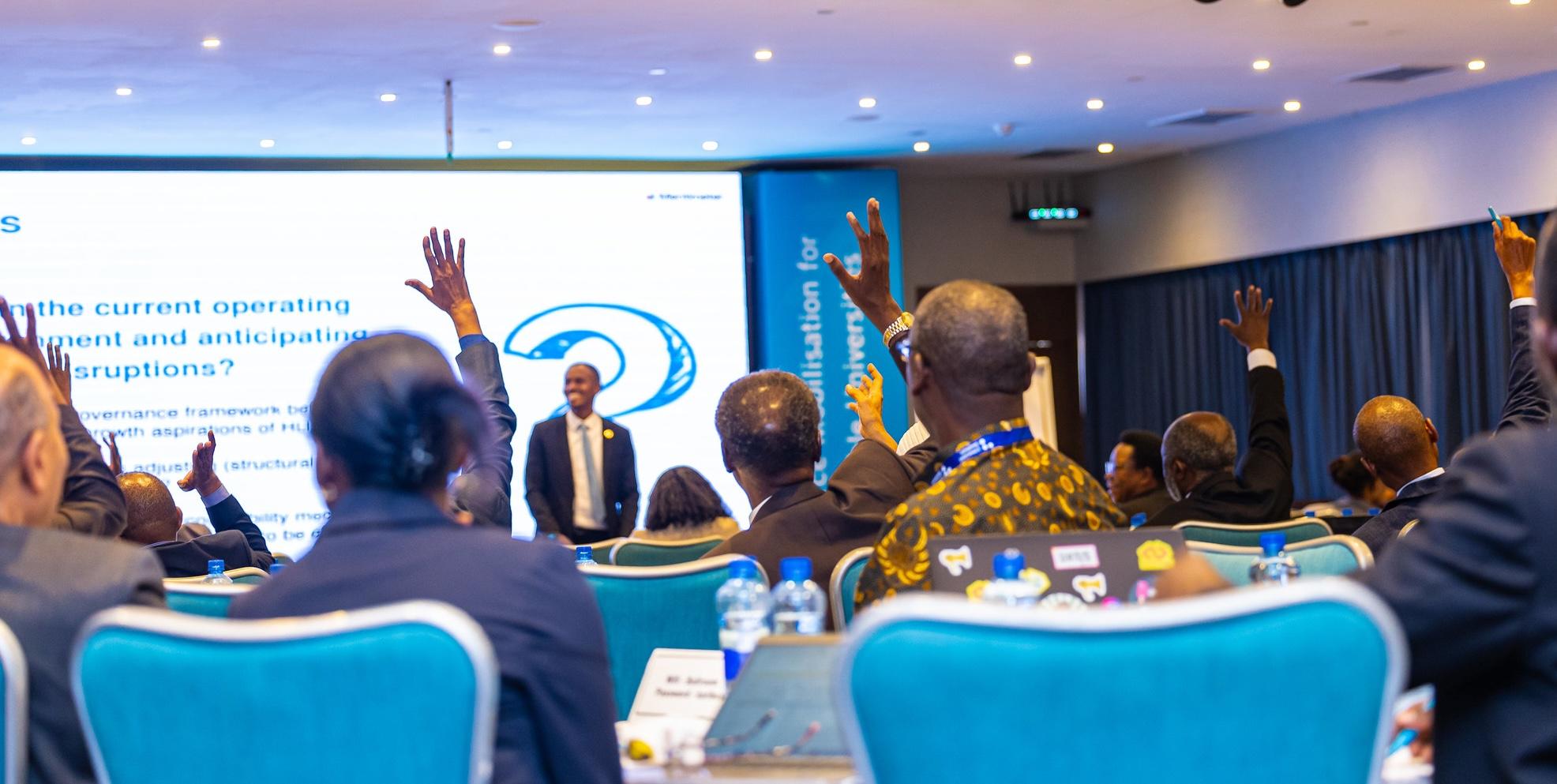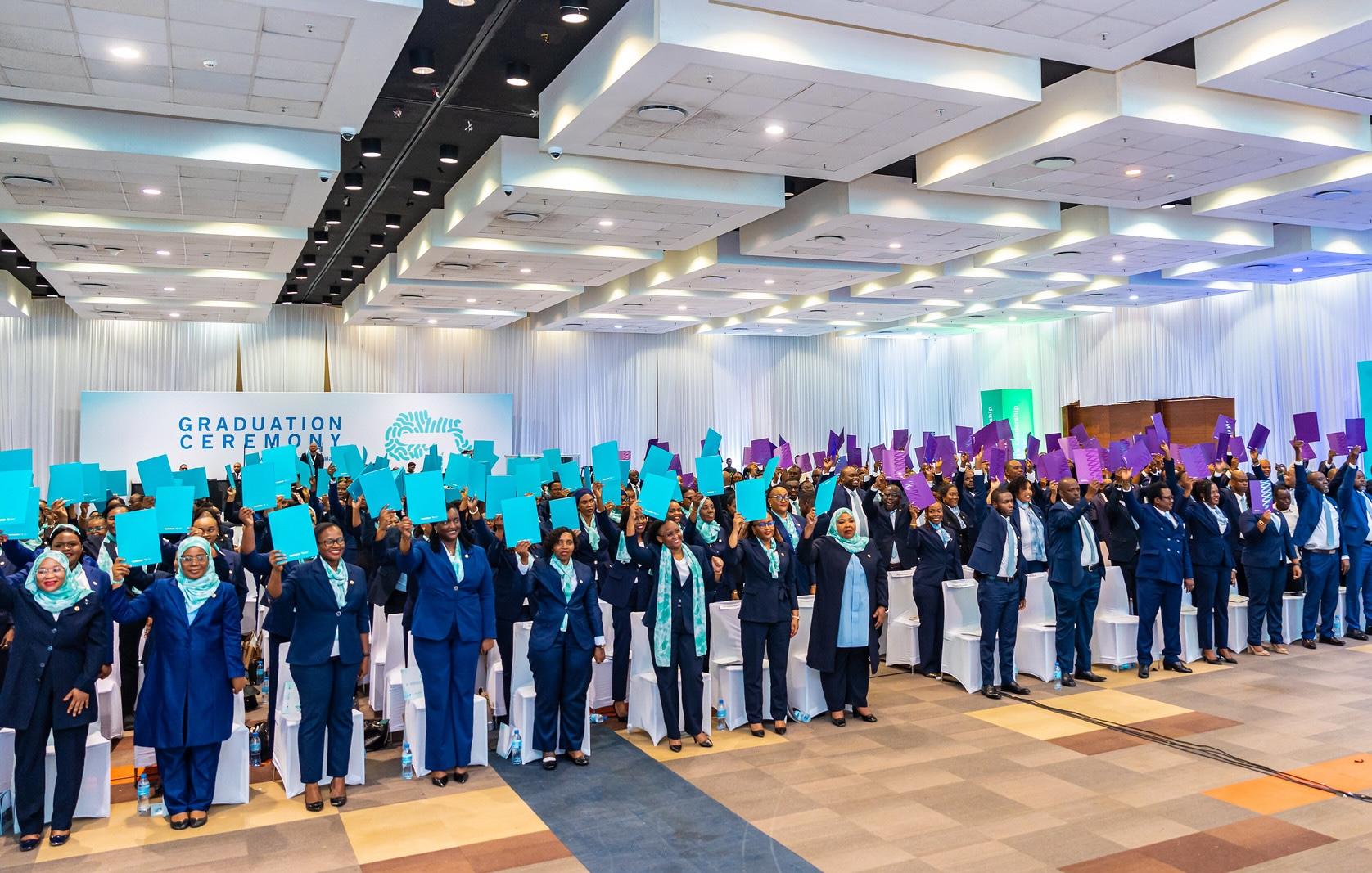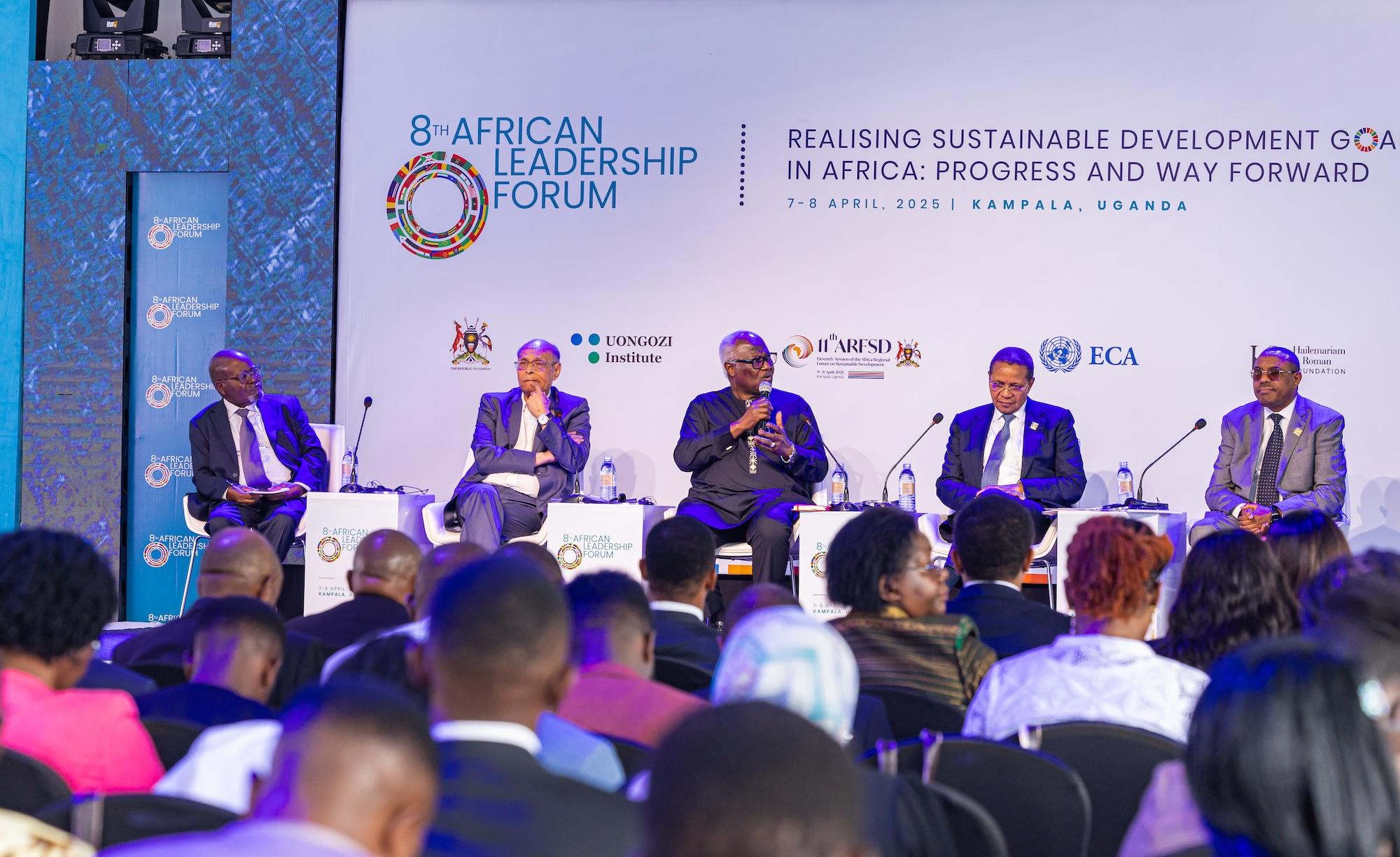By Frannie A. Léautier , Michael Schaefer, and Wei Shen
This article reflects the discussions at the 5th BMW Foundation Global Table on the opportunities that China’s New Maritime Silk Road initiative holds for East Africa. The arguments build on the 4th BMW Foundation Global Table in Poland, which focused on the Silk Road Economic Belt connecting China, Central Asia, and Europe. The article is written in two parts. Part I looks at the broader policy issues of relevance to Africa, China and Europe, while Part II provides a case study with lessons for the specific case of Bagamoyo in Tanzania.
China’s 21st Century Maritime Silk Road could be a game changer for Africa’s development. It contains the grand vision to connect China with Africa, and eventually with Europe. Will the New Silk Road succeed in aligning the “China Dream” with an African one? The answer will largely depend on China’s ability to create a truly inclusive process, allowing all participating states to bring in their respective interests, including those of landlocked and geographically disadvantaged corridor countries. The joint implementation of this unprecedented project of connectivity will be essential for its success. Unless China undertakes the necessary steps to develop the project in coordination with all parties involved, it will not be able to sustain its grand vision. Africa and Europe should give China the benefit of the doubt and become active co-drivers of the process.
More than Political Symbolism
Around 1271, the Venetian explorer Marco Polo set out eastwards to become one of the first Europeans to travel the Silk Road to China.4 Contacts between China and Africa started six centuries ago, long before Columbus and other European explorers set sail. Zheng He, a Muslim admiral in the Ming Dynasty, commanded seven expeditions between 1405 and 1433 to Southeast Asia, South Asia, Western Asia, and East Africa. His legendary expeditions using the largest wooden ships in maritime history resulted in a China-centric maritime tributary system with an important trading network of ports and cities around the Indian Ocean.5
Six hundred years later, this ancient Silk Road is being revived in the form of China’s 21st Century Maritime Silk Road (MSR). Together with the northern land-based Silk Road Economic Belt (SREB), they form the pillars of the “One Belt, One Road” (OBOR) initiative launched by Chinese President Xi Jinping in 2013. Based on the narrative of the harmony and prosperity of the ancient silk roads, China has proposed a long-term developmental strategy promoting economic cooperation among all countries participating in the “Belt and Road” initiative.
At a time, when China combines the world’s second largest economic power with growing military capability, OBOR is also portrayed by the Chinese leadership as an illustration affirming the country’s peaceful rise and its readiness to shoulder greater regional and global responsibility.
The New Maritime Silk Road reflects a strategic vision consisting of a zone of economic development which maps along the key ports and maritime trade routes of the South China Sea and the Indian Ocean (Wu and Zhang, 2013). Africa is a strategic center point in this framework. Projects to be undertaken under the “Belt and Road” framework in Africa are located in Bizerte, Tunisia; Dakar, Senegal; Dar es Salaam, Tanzania; Djibouti, Djibouti; Libreville, Gabon; Maputo, Mozambique; and Tema, Ghana.
China’s strategy is to have these key points on the “Belt and Road” space become the key sites for the transcontinental exchange of manufactured goods and commodities between the Asian and African economies along the Maritime Silk Road.
The Maritime Silk Road continues from Africa to Venice – which is also the end point of the Northern Belt Road.
What Are the Interests at Stake?
After decades of largely unsuccessful development cooperation with western and other global donors, Africa was the only continent where poverty levels had increased and aid was seen as not to be delivering what it promised (Moyo, 2009). Frequently it was labeled as the “hopeless” (The Economist, 2000) or “lost continent” (Skidelsky, 2009). Only a decade later, Africa is seen as a “rising” (The Economist, 2011) or “hopeful continent” (The Economist, 2013).
What has happened?
The change is a result of continuing economic growth triggered by the discovery of vast amounts of natural resources (AfDB, 2015). In this process, China has become a big player on the African continent.
China: Tapping the Huge African Market
Historically, China has always regarded Africa as a place of opportunity rather than a source of problems. It has courted African governments as political allies since the very foundation of the People’s Republic. Modern Sino-African relations started in 1950s, with China offering economic and technical assistance to many African countries in their quest for independence during the 1960s. In return, African nations were among the strongest supporters of the “One-China Policy,” lobbying for United Nations membership of the People’s Republic of China and the exit of Taiwan. Unlike most western aid, which was centered on technical and financial assistance, China used a different approach. By sending large numbers of Chinese construction workers and medical teams to Africa as part of its development assistance, China’s footprint in Africa soon became significant.
This active Chinese engagement in Africa was regarded by many Africans with mixed sentiments, and it is still being met with a certain dose of skepticism because it resulted in what one could call a one-sided symbiotic relationship. Nevertheless, many African partners continue to welcome Chinese investments, in particular those helping their societies to build a modern and effective urban and rural infrastructure.
Chinese policy-makers are convinced that the benefits of China’s infrastructure-driven development model can also be transferred to Africa. Research by M. Nicolas Firzli & Vincent Bazi (2011) showed that China has invested roughly 9% of its GDP in infrastructure in the 1990s and 2000s, a figure much higher than what non-Asian emerging economies invest in this field. As a result, the investment gap has made it possible for the “Chinese economy to grow at nearly optimal conditions,” while other emerging countries “suffered from various development bottlenecks: poor transportation networks, aging power grids, and mediocre schools.”
Hence, China is eager to use the infrastructure projects to facilitate connectivity between the landlocked countries and coastal areas in Africa, with the aim of fostering the same kind of local and regional economic development that China has seen since the 1980s. As the economy has been growing at a slower speed, China needs to seek new overseas markets and consumers. With its foreign exchange reserves reaching $3.65 trillion in 2015, China has led the establishment of a number of financial institutions such as the Silk Road Fund, the New Development Bank, the BRICS Bank, and, most recently, the Asia Infrastructure Investment Bank (AIIB) to finance these infrastructure projects.
Of course, the focus of the MSR on infrastructure development is also a response to China’s severe overcapacity in the construction and manufacturing sectors. According to the State Council of China, Africa is already China’s second largest overseas construction site, with over 1,046 projects completed on the continent including 2,233 km of railway and 3,530 km of road (Xinhua News Agency, 2015). Airports, ports, hydropower dams, solar and wind power generation further complement road construction and biogas plants across Africa (Lim, 2015). Under the MSR, China will leverage its comparative advantage in construction and material surplus and allow more state-owned enterprises (SOEs) to go global. Justin Yifu Lin, China’s leading economist and former vice-president of the World Bank, points out that it yields very little for China’s foreign exchange reserves to buy government bonds; it is better for China to invest in infrastructure (Lin and Wang, 2015).
In addition to generating a higher rate of return for its foreign currency reserves, Lin also suggests that the MSR will help China to transfer part of the labor-intensive industries to Africa – to benefit from its lower wages and ample labor supply as compared to the rising wages and decreasing working population in China (Lin, 2015a and 2015b; Sun 2015).
A major Chinese interest is to expand its trade exchange with Africa and its position as one of Africa’s strategic trading partners. In 2009, China overtook the United States as Africa’s largest trading partner. The bilateral trade volume reached a record high of $200 billion in 2013 (Rothberg, 2014). The majority of African exports are energy and resources such as oil, metals, and iron ore, while Chinese exports are mainly transportation-related machinery and equipment as well as (lower-end) electronics and textiles.
As the Chinese domestic market is inevitably shrinking as a result of both demographic trends in China and the ever-maturing Western markets, China is keen on tapping into Africa’s burgeoning consumer markets, which constitute some of the fastest-growing economies nowadays. According to McKinsey (2015), Africa will account for one-fifth of the global population by 2025, more Africans will emerge out of poverty and almost “two-thirds of the estimated 303 million African households will have discretionary income.”
The McKinsey report (2015) also notes that “political instability and poor infrastructure” are the two biggest obstacles for doing business in Africa, and China is offering to use the MSR to improve infrastructure connectivity between African nations, which may contribute to fostering regional stability and peace. The connectivity by road, rail, naval, air, and digital links will also accelerate industrial efficiency and productivity as well as identify new market opportunities for China’s rising brands such as Haier or Huawei among a young, urban and mobile group of African consumers.
Africa: Sustainable Development
Africa’s key interest is to transform its present economic development into a sustainable process, integrating its very diverse national and regional markets into the global market and creating new opportunities for its citizens. A dynamic connection with Europe and Asia as Africa’s two regional neighbors will be essential.
Africa has suffered from unsustainable western and other global development aid programs for many decades, which have only exacerbated the status quo. Africa’s concerns are manifold and will need to be taken into account if China’s vision of a New Maritime Silk Road is to be successful: climate change and environmental degradation risks, poor governance of the continent’s natural riches, illegal mining operations, the undermining of the competitiveness of African products and local industry branches. And last but not least, there is the contagious spread of corruption.
It is in Africa’s, in particular East Africa’s, interest that the 21st Century Maritime Silk Route opens a new chapter. It should help facilitate the transfer of modern technology and know-how, allow for increased market access, create new employment opportunities for Africans, offer affordable vocational education and training, fairness and reciprocity in competition cases and cooperation negotiations, and help build up value-added industries. All that should be embedded into a cooperative framework which will require a genuine participatory approach and truly eye-level cooperation.
There are precedents on which the Maritime Silk Road concept could build. One of them is the first of the infrastructure projects conceived on a pan-African scale, the TAZARA Railway. Built between 1970 and 1975, it links the port of Dar es Salaam, Tanzania’s largest city on the Indian Ocean, to the town of Kapiri Mposhi in Zambia, where the copper mines are concentrated. At the time of its completion, the TAZARA Railway was the single longest railway in Sub-Saharan Africa covering a stretch of 1,860 km (Brautigan, 2010).
The idea was to connect Tanzania and Zambia after their independence and to help develop their vast agricultural lands in the southwest and northeast regions, respectively. The project gained prominence as a solution for landlocked Zambia during the apartheid years in South Africa when Zambian exports were blocked from transiting out of South African ports. TAZARA was built through a tripartite agreement between the governments of Tanzania, Zambia, and China as a turnkey project. Costing $500 million to construct, it represented the largest single foreign aid project undertaken by China at the time.
Today, the TAZARA Railway fits in with China’s vision for Africa through the Maritime Silk Road initiative, focusing on infrastructure development and increased connectivity.
Europe: Connecting with Africa
Given the important if often controversial history between Africa and Europe, future prospects for the continent should include a role for Europe within the opportunity space provided by the Maritime Silk Road.
As Africa will be a potential springboard for China into the European market, Europe has an interest in connecting both ends of the “One Belt, One Road” initiative. OBOR would connect Europe via central Asia (Economic Belt) and via Africa (Maritime Silk Road) with East Asia and China. By cooperating to enhance the infrastructure and to develop new markets through the creation of new job opportunities for the people living in the corridor states, European companies will be able to explore new business opportunities in many of the emerging economies.
A partnership with China and Africa in the context of the OBOR concept would offer Europe a new avenue to contribute to stabilizing its southern neighborhood, a region of growing concern. Islamist terrorism spreading from the MENA region to Nigeria and large-scale poverty in Sub-Saharan Africa are major sources of conflict resulting in an unprecedented migration from Africa to Europe. It is in Europe’s best interest to cooperate with all the forces that could contribute to more stability.
There will, however, be a difficult balance to strike. Even though the non-intrusive character of China’s “no strings attached” and “no interference in political affairs” approach has been instrumental for the scalability of the “One Belt, One Road” initiative, an opportunistic disregard for existing defects inherent in the governance systems of the region is not a sustainable foundation for cooperation.
Development and governance are two interdependent sides of the same coin. Both need to be strengthened.
Indeed, China could benefit a lot from the EU’s long experience in pushing for incremental reforms on the ground and involving civil-society actors in cross-sector dialogue and cooperation. On the other hand, Europe should be humbled by China’s impressive success in achieving tangible results and accelerating vital infrastructure developments. A good compromise should be found: While the EU could revisit its often rigid stance on linking investment agreements to the implementation of previously recommended policy reforms, China should accept the requirement of good governance elements for the success of its intended investments.
Success Factors of the Maritime Silk Road Initiative in Africa
Firstly, the most important precondition for the success of the OBOR is mutual confidence. Though Chinese involvement in Africa has benefited from historical goodwill, it has been subject to growing scrutiny in recent years both in the region and globally. Some African leaders have openly expressed their concerns over China’s resolute policies to secure its pragmatic interests in African resources, voicing their dismay on issues ranging from labor treatment to environmental damages (Alessi and Xu, 2015).
Secondly, Chinese companies need to be better prepared when investing abroad. China’s strategy of “going global” has received mixed reception from African partners. This is especially true for large-scale SOEs, which often have difficulties in adjusting to the different political, cultural, financial and legal framework conditions.
Much of the Chinese investment in Africa has come with a large-scale influx of laborers and traders from China to Africa. This has led to a controversy on whether Chinese investments in Africa are creating jobs or depriving local populations from finding employment, and on whether some irresponsible investments have resulted in serious social and environmental imbalances (Sun, 2015). Furthermore, Chinese companies are less sensitive to the importance of the rising civil society in Africa, which has been vocal about the negative aspects of Chinese engagement in Africa.
Thirdly, as the MSR is still a project in the making, transparency and coordination are vital. Prior to the inclusion of Africa in the OBOR initiative, there were already 65 participating countries. With Africa, a total of over 100 countries will be potentially involved. Initially, Kenya with its port city of Mombasa was the only partner in the MSR, now Tanzania, Ethiopia, Djibouti and Mozambique are also included in the MSR plan in one way or another.
The Tanzania Port Authority recently announced its approval for a $10 billion project to develop a port at Bagamoyo financed by China. Located about 60 km north of Dar es Salaam, Bagamoyo is expected to become the biggest port in Africa once completed, handling twenty times more cargo than Dar es Salaam port. It will link Bagamoyo port to the central corridor railway and the TAZARA Railway through an extended link. A parallel highway linking Bagamoyo to the Uhuru Highway going to Zambia will also be built. Bagamoyo will be a strategic pillar and connect the MSR with other East African countries, including Mozambique, Malawi, Zambia, Democratic Republic of Congo, Burundi, Rwanda, Uganda, Kenya, South Sudan, Comoros, Madagascar, and Seychelles. An integral part of the Bagamoyo project will be an Export Development Zone (EDZ) which will include the construction of an industrial city as well as upgrades to road and railway infrastructure.
Fourthly, as China also has strategic interests in several African countries, careful coordination will be needed to reduce misunderstandings and internal rivalry in Africa.
To ensure effective coordination and transparency it would be important to establish a multi-national coordinating body including stakeholders from all participating countries. This coordinating body would have the task to coordinate cross-border projects on the basis of a level playing field, taking the legitimate interests of all stakeholders on board. This approach would create the necessary degree of transparency and trust which will be essential in engaging with China in the framework of the Maritime Silk Road.
Negotiating with one voice would also improve the bargaining position of African states vis-à-vis China. This is of particular importance when it comes to standard-setting or defining the conditions for extractive activities of foreign mining companies as well as also for large-scale construction projects. Coordination among each other and securing transparency regarding respective national interests will also allow African leaders to identify areas of convergence, strengthen regional integration, and adopt a multi-vector diplomacy approach. This will provide African countries with the necessary political leverage to negotiate with Europe and China as well as other powers.
Furthermore, African leaders should also explore the potential of existing exchange formats and institutions such as the Forum on China-Africa Cooperation (FOCAC), which will hold its 6th Ministerial Conference on December 4-5 in Johannesburg. With the theme for the upcoming summit being “Africa-China Progressing Together: Win-Win Cooperation for Common Development,” it only makes sense for all African states including the transit countries to sit down and discuss beforehand their strategy and lay out their expectations towards the partnership with China.
Fifthly, people-to-people exchange between China and Africa should be strengthened. Historical legacies and goodwill based on past experience will gradually be fading away. Though in recent years China has welcomed thousands of African students and traders, while many Chinese moved to Africa for business and work opportunities, both Africans in China and Chinese migrants in Africa remain in relatively segregated communities, with very limited interaction with locals. There have been tensions and negative media reports on both communities in recent years, such as illegal mining by Chinese migrants in Ghana, or overstay of Africans in Guangzhou.
Both Chinese and African governments need to integrate these communities better in the local setting and provide them with better access to information, advice and social services. As the educational mobility between China and Africa is currently more of one way traffic from Africa to China, it is in the interest of Chinese policy makers also to encourage its young people to study in African countries in order to understand better Africa, its history, languages, religions and societies. By doing so, Chinese visitors would be more sensitive to the needs of local communities in Africa and pay greater attention to civil societies, environmental standards and labor conditions in Africa.
Dr. Frannie A. Léautier is the Chairperson and Co-Founding Partner of Mkoba Private Equity Fund.
Amb. Michael Schaefer is Chairman of the Board of the BMW Foundation and the former German Ambassador to China.
Prof. Wei Shen holds the Jean Monnet Chair of EU-China Relations at the ESSCA School of Management (EU-Asia Institute) and works at Lancaster University.
